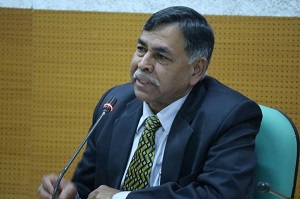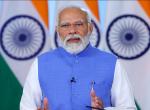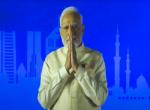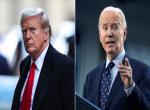In a surprise announcement on 3 September, days after Tokyo Olympics 2020 ended, Prime Minister Yoshihide Suga announced that he will not run in the upcoming Liberal Democratic Party (LDP) presidential election scheduled for 29 September. This means his term as Prime Minister shall come to an end on 30 September, a little short of one year at the helm.
Two key factors led Suga to his political graveyard. One, despite strong public disapproval, Suga went ahead in hosting the Olympic Games. In one of his writings, the present author had argued strongly against Tokyo hosting the Games for fear of sudden spike in infection cases after the Games, which is what, happened, predicting further that Suga would be heading towards his political nadir. Two, Suga Cabinet’s support ratings continued to plummet due to its response to the coronavirus pandemic and other related issues. If one more reason is added, Suga also sensed that following LDP policy chief Fumio Kishida’s announcement to run in the party leadership race, among other potential candidates, Suga also feared that LDP could run into rough weather in the House of Representatives elections in October next year if he continues to remain in office.
Suga had hoped that his initial strategy by accelerating Covid-19 vaccination and propagating the Tokyo Games as a success shall bail him out and he can keep the PM chair. This is not exactly what happened, but just the opposite. Not only infection cases continued to spike putting pressure on healthcare infrastructure, thereby exposing Suga’s inefficiency, people were frustrated when the Suga government repeatedly extended and the state of emergency over the Covid-19, hugely inconveniencing the common man, and disrupting their daily lives. His hopes of approval ratings for the Cabinet picking up not only remained unrealised but also the ratings continued to nosedive.1 As it transpired, this abysmal public approval rating was a wake-up call for Suga, which made him decide to withdraw from the race with grace.
In fact, Suga’s choice to succeed Shinzo Abe as the 99th Prime Minister of Japan was itself a surprise. The present writer had doubts if Suga could deliver, given that Japan is facing challenges in multiple fronts, both domestic and external ones, particularly on security issues. After Suga took office, the LDP saw a series of reversals of its fortunes. It lost a string of elections, including a triple-loss in by-elections and a repeat election in April to fill vacant seats in the Diet and the Tokyo Metropolitan Assembly election in July. More recently in August, the candidate fully backed by Suga in the Yokohama mayoral election suffered a crushing defeat. Sensing that he is already in the chopping block of political office, Suga seems to have been forced to withdraw from the LDP presidential race, just to preserve some of the semblance of his political face and not suffer further humiliation. His intention to reshuffle the LDP leadership and the Cabinet, and then dissolve the Lower House in mid-September ahead of the LDP leadership race also fell through as the current was gathering steam against him.
At individual level, Suga was an efficient worker in party’s organisational matters but not on larger issue of governance. In the face of unexpected challenges such as the pandemic and the Olympic, his vulnerability and administrative inefficiency was exposed. Opinions might differ but his short tenure surely would come under intense scrutiny by analysts of Japanese politics in the coming days, where his score card could reflect poorly. In a faction-ridden Japanese political party system, Suga was neither a hereditary legislator nor a member of any intra-party faction. As it transpired, his relative success on digitisation of government services and efforts to address loneliness and isolation issues were not enough to back his political space.
Was Suga friendless?
The fast-moving developments in Japanese politics leading Suga to withdraw from the party presidential race gives one the impression if Suga was friendless in the party and that he had become a loner. This could be true to some extent because of Suga’s inappropriate decisions. A day before his announcement, Suga had hinted for Party reshuffle, wherein he had planned to get rid of close ally Secretary-General Toshihiro Nikai, the person who played a key role a year ago in getting Suga elected as party chief.2 This was a wrong political statement, a sort of betrayal to a party colleague.
Having been in Japanese politics for a long time, Suga demonstrated his political immaturity by announcing ahead of the presidential race that he would replace Taro Kono, Shinjiro Koizumi and well-known veteran Shigeru Ishiba, a former Defence Minister and Secretary General and a potential prime ministerial candidate. Making further blunder, Suga had approached Motoo Hayashi, the acting Secretary-General to take over as Chairman of the party’s Election Strategy Committee, an important role at the election time scheduled for late October. Suga overlooked the fact that Hayashi belongs to the Nikai faction and as expected, was furious that his boss was being dumped. Not surprisingly, Hayashi spurned Suga’s overtures. Suga’s attempt to weaken the Nikai faction proved to be a fatal blow to Suga, whose own power base is too weak belonging to no faction. Koizumi’s forewarning did not reach Suga’s deaf ears.
The question that arises now: Did Suga salvage some of his reputation by withdrawing from the LDP presidential race? As said earlier, his short tenure will come now under intense scrutiny, where Suga will surely score low. He made many blunders and finally paid the price by opting for an honourable exit. History will judge what legacy Suga left as his political legacy.
Was Suga’s exit LDP style regicide?
In a popular daily column in Asahi Shimbun, Vox Dei, that takes up a wide range of topics, including culture, arts and social trends and developments, described Suga’s exit debacle as nothing less than regicide.3 The column explains, regicide, the custom of killing a king, was widely observed in primitive societies. Elaborating further, the column relates Suga’s sudden exit with the LDP’s style of changing its leaders mercilessly. In The Golden Bough: A Study in Music and Religion, Scottish social anthropologist, Sir James George Frazer (1854-1941) cited many examples of consecrated kings and high priests being slain the moment they manifested signs of bodily decline. It was then believed that in the event of a monarch’s natural death, it would bring calamity on the society, thereby mandating the monarch’s family or heir apparent to kill him if the monarch faces imminent death out of sickness. The Asahi column compared the latest upheaval within the LDP akin to the regicide, though times and circumstances are totally different now.
The LDP lawmakers therefore started looking for a new face of the party as their own political fortunes during elections under a weak leadership looked under threat. Suga was also abandoned in his own home turf of Kanagawa Prefecture where he could no longer rely for campaign support. The best option for Suga was therefore to withdraw from the presidential race to retain some honour. Suga was disdainfully compared as a “product” that can be discarded once it becomes a liability as the same cannot be repaired or improved. Persons who put Suga last year with overwhelming support on a pedestal are the same persons who dragged him down once his utility was over. It transpired that politics can be ruthless.
Era of ‘revolving-door’ PMs Back
With Suga’s decision to quit, Japan is back to the era of ‘revolving-door’ Prime Ministers with Suga as the latest in the list.1 After his predecessor Shinzo Abe set the record for the longest tenure as Prime Minister with nearly eight years in office,2 Suga’s tenure ended in less than one year. But before Abe’s long tenure, the prime ministership was often described as a “revolving door” because of leaders’ short terms. In past two decades, Japan saw seven prime ministers whose tenure lasted only about a year in office.
Looking back over the past two decades, there are a number of others who lasted only about a year in the role. First in the list is Yoshiro Mori (April 2000-April 2001). He became Prime Minister after his predecessor Keizo Obuchi fell into a coma and later died. Known for his numerous gaffes, his support rate fell to 9 % in media polls, forcing him to resign. More recently, his sexist remarks created such uproars that he was forced to quit as the President of Tokyo Olympics Organisation committee. Second: Though Shinzo Abe’s second tenure was the longest, his first term lasted just one year when he stepped down owing to failing health (September 2006-September 2007). Third: Yasuo Fukuda who succeeded Abe, abruptly resigned, as the ruling coalition was struggling to pass government-sponsored bills in the opposition-controlled Upper House (September 2007-September 2008). Fourth: Taro Aso, who is currently Deputy Prime Minister and Finance Minister, stepped down after the LDP suffered a historic defeat against the Democratic Party of Japan (DPJ) in the 2009 general elections (September 2008-September 2009). Fifth: Yukio Hatoyama became the head of the first government not to be led by the LDP in 15 years, following victory in the 2009 Lower House elections resigned over political funds scandal and controversy over relocating US military base in Okinawa Prefecture (September 2009-June 2010). Sixth: Naoto Kan who replaced Hatoyama lasted a little over a year (June 2010-September 2012) was heavily criticised for mishandling of the March 2011 earthquake and tsunami, which triggered a triple meltdown at the Fukushima No.1 nuclear power plant. Seventh: Yoshihiko Noda (September 2011-December 2012) was the last Prime Minister of the DPJ-led government. His tenure unexpectedly ended when he dissolved the Lower House for a snap election in December 2012 and lost to LDP led by Abe, thus heralding one of the longest tenures of a Prime Minister in Japan (December 2012-September 2020). With Suga who succeeded Abe and resigned in September 2021 thus joined the list of ‘revolving-door’ prime ministers of Japan.
Who are the prospective candidates to replace Suga?
For now foreign policy has taken a back seat and everything is focussed on domestic politics in Japan. There is a lurking fear that Japan soon shall return to an era of political instability. If that happens, the fear of policy paralysis could be real for some time and that does not portent good for Japan.
The following leaders are potential candidates to become Japan’s next Prime Minister.3 Fumio Kishida, a former Foreign Minister in the Abe administration and LDP policy chief in Suga administration, was the first to announce that he shall contest the presidential race. Though he was tipped to succeed Abe that did not happen as his public approval rate was low. Moreover Kishida is more dovish and not so enthusiastic of revising the peace clause in the Constitution. Then there is Sanae Takaichi, former minister of internal affairs, who wants to become Japan’s first female Prime Minister. Besides her views on how to control the surging pandemic and vaccination drive, she is controversial as she often visits Yasukuni Shrine, the controversial memorial to Japan’s war dead. She also opposes allowing married couples to keep separate surnames, which might not sell well with modern Japanese women. She has the support of Abe as she has pledged to continue his economic reforms, known as Abenomics. As a wildcard candidate, if she succeeds and goes on to win the party presidential race, she would become Japan’s first female Prime Minister, as winning the leadership race automatically elevates the winner to Prime Minister because of the LDP’s dominant number of seats in the Diet. That however is the unlikely scenario.
Taro Kono, the administrative reform minister in charge of the Covid-19 rollout ranks high on the list of lawmakers to succeed Suga. He is educated in the US, fluent in English, media savvy and also served as Japan’s Foreign and Defence Minister. In the Suga administration, he held the portfolio for administrative reform. Though perceived to be a maverick, his views are a bit different from those of his father, former chief cabinet secretary Yoheo Kono, who authored a landmark 1993 apology to “comfort women”, a euphemism for women forced to work in Japan’s military brothels. Kono has the support of Taro Aso faction.
The ever-affable Kono is young at 58. He met on 4 September with several middle-ranking members of the Aso faction to which he belongs. Aso, an Abe crony, backs him and gave the thumbs' up to Kono’s candidacy. The problem with Kono is that he is not sure if the entire lot of the Aso faction shall back him as some also support Kishida’s candidature.3
Then there is Shigeru Ishiba, a former Defence Minister who ranks high in voter surveys but is less popular with party MPs. But given his views on many critical issues such as agriculture and reviving local economies might not endear him with the people, making his chances weak. But Ishiba is in touch with Nikai who holds immense power and therefore seeks his faction’s support. Suga, 72, had dumped Nikai, 82, from a key executive post to improve the party image, though he was hugely instrumental in getting Suga elected a year ago. Ishiba’s case could be weak despite Nikai’s sense of betrayal by Suga and therefore support for Ishiba as like in Aso faction, divisions in his faction with some leaning towards Kono as their pick can play spoilsport. With only 17 members in the faction, including himself, Nikai does not seem to succeed bailing out Ishiba.
With no clarity on the table, does it mean that Japan is entering to another phase of political instability? That seems to be the likely scenario for some time.4 With so many able and competent aspirants in the fray, there does not seem an imminent threat to political stability that could last long.
Of all the aspirants, Kono seems to be on a strong wicket as opinion poll suggests. A Kyodo News poll released on 5 September picks Kono to be the most popular. While he gained 31.9 per cent support from respondents, Ishiba’s percentage share was 26.6 per cent, with Kishida next with 18.8 per cent.5 Another survey by Yomiuri Shimbun published on 6 September 2021, revealed 23 per cent or the respondents said Kono was the most suitable person to take over as Suga’s successor. 6 However, party elders feel Kono is too young for the job at 58 and also wary of him for his outspokenness and reputation as a maverick. Though initially Kishida was seen as logical successor to Abe, Suga now backs Kono. Though at the time of writing, it is hard to predict who shall finally become Japan’s next Prime Minister, Kono’s credentials look strong, though a surprise change could also be a possibility given the unpredictability in the faction-ridden Japanese politics where swing could be sudden. The aspirants’ immediate target is to ensure support from 20 lawmakers to qualify to become a formal candidate to be in the race.
Abe who resigned in 2020 and was succeeded by Suga still retains influence in the party’s two largest factions and among conservative lawmakers. It is reported that Abe wants to promote former internal affairs minister Sanae Takaichi. But Yomiuri survey of 6 September suggested that Takaichi scores just 3 per cent just behind Abe himself with 5 per cent. So, a dramatic turnaround seems unlikely.7
Conclusion
As Japan is experiencing a fifth wave of coronavirus infection, with severely ill Covid-19 patients hovering around a record high, and further complicated by the stressed medical infrastructure, the people would expect a leader who can deliver results by taking timely countermeasures to halt this surge. Kono as the vaccination czar is expected to be the right candidate for an effective coronavirus response and thus could be seen occupying the Prime Minister chair on 30 September. Suga’s biggest blunder was to hold the Olympic Games, which emerged as the primary reason for the sudden surge of the virus, and this single mistake wrote his political obituary. Japan’s new Prime Minister ought to prioritise vaccination on a fast track basis, improve medical infrastructure by securing medical professionals and extra hospital beds, and improve medical institutions to respond patients recovering at home. The task is gigantic. Kono as the expected successor to Suga would stand to public scrutiny for the measures that he chooses to take.
This is not to say that foreign policy issues shall occupy a backseat. That is another challenge to the new Prime Minister. That aspect is deliberately kept outside the scope of this analysis and would be examined separately.
- “Suga says he won't run in upcoming LDP election, effectively ending term as Japan PM”, Mainichi Daily News, 3 September 2021, https://mainichi.jp/english/articles/20210903/p2g/00m/0na/031000c
- “In the end, no one was there to help Suga remain as LDP leader”, The Asahi Shimbun, 4 September 2021, https://www.asahi.com/ajw/articles/14433434
- “Vox Populi: Suga exit debacle amounts to nothing less than regicide, LDP style”, The Asahi Shimbun, 4 September 2021, https://www.asahi.com/ajw/articles/14433038
- Kazuaki Nagata, “Suga joins ranks of Japan's 'revolving-door' prime ministers”, The Japan Times, 3 September 2021, https://www.japantimes.co.jp/news/2021/09/03/national/politics-diplomacy/revolving-door-prime-ministers/
- “Japan’s Longest-Serving Prime Ministers”, 20 November 2019, https://www.nippon.com/en/features/h00296/japan%E2%80%99s-longest-serving-prime-ministers.html
- “Candidates jockeying for position in LDP presidential race” The Asahi Shimbun, 5 September 2021, https://www.asahi.com/ajw/articles/14433971
- William Gallo, “Japan's Suga to Resign, Signaling Possible Return to Political Instability”, 3 September 2021, https://www.globalsecurity.org/wmd/library/news/japan/2021/japan-210903-
- “Taro Kono tops opinion poll as most fit to become Japan’s next PM”, Mainichi Daily News, 5 September 2021, https://mainichi.jp/english/articles/20210905/p2g/00m/0na/031000c. Also see, “Vaccine czar Taro Kono tops opinion poll to be Japan's next leader”, The Japan Times, 6 September 2021,
https://www.japantimes.co.jp/news/2021/09/06/national/taro-kono-ldp-survey/ - Sarah Jones, “Public support strong for Japan’s Covid vaccine minister as next PM, says opinion poll”, 6 September 2021, https://www.newzpick.com/2021/09/06/public-support-strong-for-japans-covid-vaccine-minister-as-next-pm-says-opinion-poll/
- Ibid.
(The paper is the author’s individual scholastic articulation. The author certifies that the article/paper is original in content, unpublished and it has not been submitted for publication/web upload elsewhere, and that the facts and figures quoted are duly referenced, as needed, and are believed to be correct). (The paper does not necessarily represent the organisational stance... More >>
Image Source:
https://images.livemint.com/img/2021/04/21/600x338/2021-04-21T033652Z_1_LYNXMPEH3K051_RTROPTP_3_CLIMATE-CHANGE-JAPAN_1619014680952_1619014705195.JPG











Post new comment